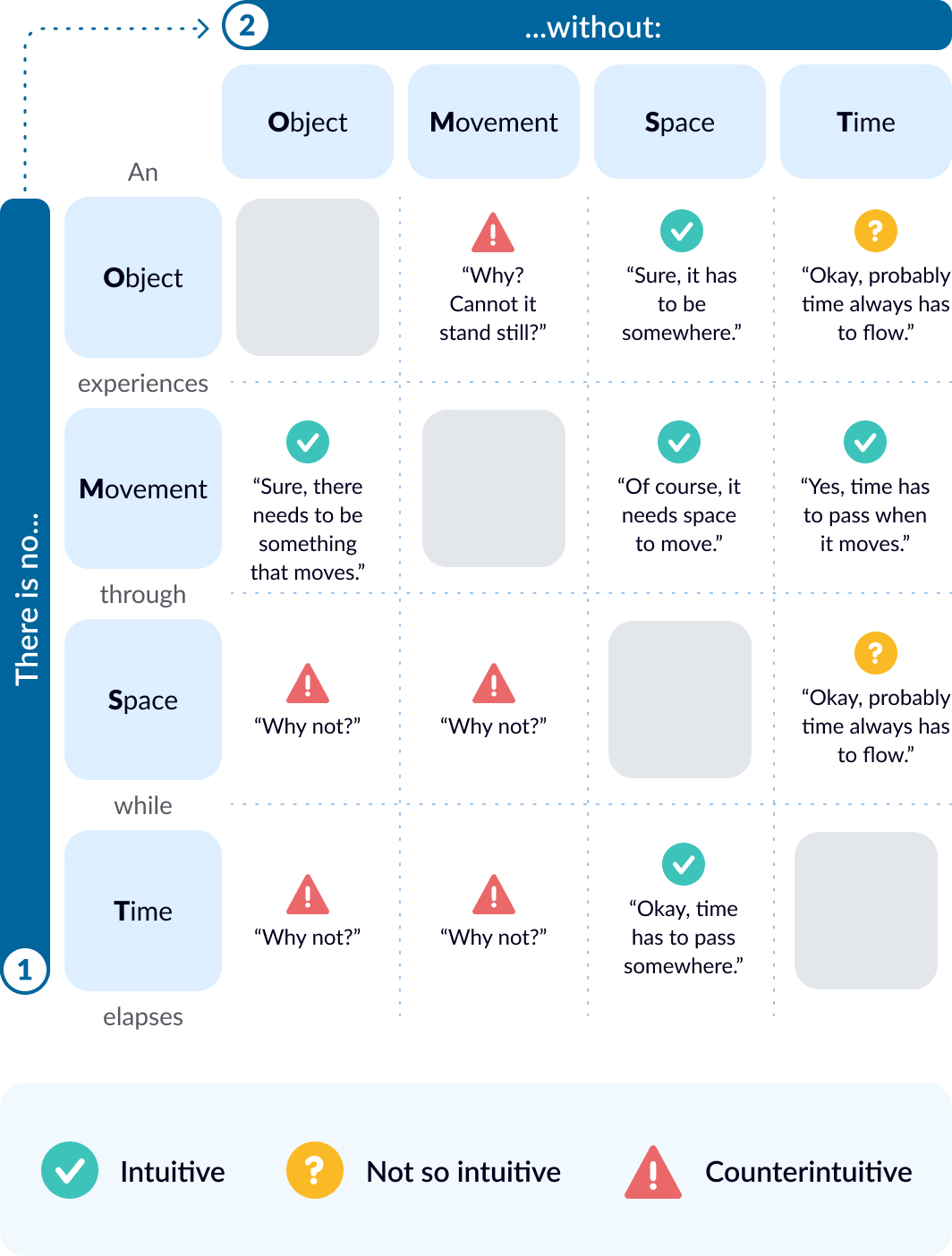
This is an extract from the OPIP book. Previously, (B)obby argued to (A)lice that progress in physics may come from developing a better understanding of how human thinking could be flawed. Note: This post has the “Speculative Theories”-tag to indicate that what is being said should be taken with a grain of salt.
A: What are other flaws in human thinking?
B: As mentioned before, having fewer concepts is almost always better (less wrong) than having many. And when do we encounter separate concepts? Basically, every kind of distinction we make implies a different concept.
A: What are some examples?
B: Our basic model of the world, that objects move through space while time elapses, already contains several distinctions. For example, we could imagine empty space, not containing any objects. I argue that these distinctions are incorrect and that nature cannot be broken down into separate components. Each component is nonsensical without the others. If we go through the various combinations of what this implies, some conclusions are obvious, others not so much (see figure).
Separating the Inseperable

A: Taking the example “No space without object”: Don’t scientists already say that there is no such thing as empty space?
B: The current understanding in physics is that if you take out all matter or particles, you’d still be left with various fields (electromagnetic fields and others), and that virtual particles are created continuously that appear and disappear very quickly. Although this idea somewhat aligns with my argument, it’s still different from what I’m saying. I argue that it’s impossible to separate space and particles entirely—meaning, you can’t completely clear space of particles. The statement that particles appear and disappear implies that at some point, there are none, still sticking to the paradigm of separate concepts of particles and space.
A: What I don’t understand is that on one hand, you claim particles don’t exist, at least not independently. But then your conclusion that “space can’t exist without particles” seems to imply that particles do exist.
B: Okay, one step back: Particles, in the classical sense (i.e., distinct, separate objects) don’t exist. Remember, all our current conceptions are flawed. We’re now trying to find out what thinking mistakes we make, and then infer how this “new reality” would manifest itself if we still viewed the world through the eyes of our traditional model. This approach is not only legitimate but also necessary because any new theory must make testable predictions in our everyday world.
A: Returning to the matrix, what are the prevailing views in current physics on those counterintuitive conclusions?
B: Let’s go through some of the cells:
In other words: science is explaining one cell after another in the matrix. Can this all be coincidence?
A: Do you think this paradigm has explanatory and predictive power?
B: Potentially. I also like that it integrates insights from different theories—such as relativity theory and quantum physics—that usually don’t go well together.
The book continues by elaborating on what the “Human distinctions are errors” paradigm implies for the concepts of space and time, as well as how it approaches the core distinction between existence and non-existence. To learn more about those, get the OPIP book.
